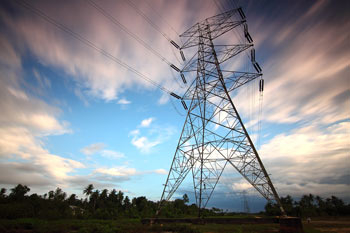

By Erin Cosgrove | Fri, April 26, 24
Not only is 2024 the year for Inflation Reduction Act funds, but it is also for planning customer-funded energy efficiency programs! Five states in the NEEP region will set new, multi-year energy efficiency plans. If approved, these plans will invest at least $16 billion over the next several years in the region’s energy efficiency programs to help customers save energy and money, reduce emissions, and serve as a grid resource. This blog previews trends we are seeing through the region so far, including initiatives for investing in equitable workforce development, streamlining program offerings, and expanding access, and implementing programs that prioritize beneficial electrification.
These themes are based on a review of the proposed Mass Save programs for 2025-2027, New Jersey’s Energy Efficiency Triennium 2 for program years 2025-2027, New York’s Energy Efficiency and Beneficial Electrification portfolios for 2026-2030, Maryland’s 2024 – 2026 EmPOWER program, and Efficiency Maine Trust’s Triennial Plan VI (2026 – 202).
Investment in Workforce
To develop the clean energy market, there will be a growing demand for all kinds of new workers, including contractors who accelerate heat pump adoption and home auditors that understand efficiency and electrification opportunities available to customers. States are building on their past workforce efforts to propose new programs that go beyond training, alleviating barriers and utilizing community organizations and support where possible. Below is an overview of how states are increasing their efforts:
In Massachusetts, the Mass Save 2025 - 2027 Draft Plan proposes a doubling of workforce investment from the previous cycle, from $12 to $24 million. Mass Save would use this funding to increase initiatives that create a more diverse workforce, one that better represents the communities served by Mass Save programs. Funding would also contribute to continuing the Heat Pump Installer Network and expanding opportunities for commercial and industrial workforce training.
The New Jersey Board of Public Utilities’ Triennium 2 Order mandates that the state continue its workforce development program and grow efforts to encourage supplier diversity and contractor coaching/mentoring in addition to training. The program also provides competitive grants to community-based organizations in partnership with the NJ Department of Labor and utility companies.
These grants will enable organizations to identify candidates for the program and support them as they transition from trainee to employee. New York’s Public Service Commission (PSC) established NYSERDA as the single implementer for statewide workforce programs. In this role, NYSERDA will develop and implement a workforce strategy that leverages ratepayer funding and ensures creation of an appropriately skilled and trained workforce.
Streamlining Program Offerings
Proposals seek to establish a single touch point for residential customers to engage with programs and identify all available rebates. These programs are referred to as one-stop-shops for the “braiding” of funding and resources. They seek to create a central touchpoint for whole home efficiency and building decarbonization in the state. For this round of programs, both Massachusetts and New Jersey have proposed changes to their programs to streamline participation and/or coordinate resources.
In Massachusetts, the Mass Save 2025 - 2027 Draft Plan proposed creation of a coordinated, statewide approach for joint delivery and funding of electrification. This includes the use of a single statewide contractor that provides “turnkey” solutions to customers. The program will include multi-lingual, holistic customer support and will process all rebates to ensure proper allocation of funds and alleviate additional burdens on participants. It will also identify a contractor for participants to streamline their experience with the program.
New Jersey’s Triennium 2 Order placed additional requirements on utility-run residential programs to provide comprehensive energy efficiency retrofits for existing homes. The program must include energy assessments, incentives for whole home efficiency plus electrification, behavioral programs, and incentives for efficient products.
Prioritizing Beneficial Electrification
Beneficial electrification of space and water heating displaces emissions directly in homes and on the grid, while also providing comfort and lowering operating costs. In the past, states in the NEEP region have taken steps to embrace beneficial electrification through adjusting program goals. New York and Massachusetts both already have fuel neutral goals. Maryland is joining this trend and with recent legislation passed the state’s newest EmPOWER Plan which will have GHG emissions goals instead of annual savings goals. In some of the most recent energy efficiency filings, states have made a firmer commitment to prioritizing beneficial electrification alongside standard energy efficiency programs.
In New Jersey, the Board of Public Utilities Triennium 2 Order requires utilities to file Beneficial Electrification Programs as part of their Triennium 2 portfolios. The Beneficial Electrification Programs will provide financial incentives for residents using fossil fueled equipment to voluntary adopt efficient electric equipment, including heat pumps, water heaters, and other appliances. It also requires utilities to leverage IRA (Inflation Reduction Act) rebates and tax credits in designing the plans.
In Maine, legislation was passed in 2023 mandating beneficial electrification plans as part of the Efficiency Maine Trust’s (EMT) energy efficiency portfolios. Due to this legislation, the Efficiency Maine Trust’s plans must include beneficial electrification measures that are cost-effective and reliably reduce electricity rates over the life of the measures. Over the summer, Efficiency Maine will hold a series of workshops to design their portfolio.
In New York, the Public Service Commission (PSC) required the new portfolio of efficiency programs dedicates 85 percent of portfolio budgets to electrification and electrification readiness measures or “strategic measures”. These programs must use heat pumps as a primary heating source and combine efficiency with electrification where possible. This includes removing rebates for lighting and plug-in appliances to prioritize deeper, whole home measures in programs.
Another way to prioritize electrification in energy efficiency plans is removing incentives for natural gas and other fossil fuel-fired equipment. New York’s PSC Order removes incentives for natural gas fired equipment so that ratepayer funds support only electrification and electrification readiness in line with state priorities and polices. Additionally last year, Massachusetts passed legislation mandating Mass Save discontinue rebates, incentives, and financing for equipment powered by natural gas, oil, or propane by 2024.
What’s Next
The NEEP region has always been a national leader in the implementation of energy efficiency programs. With this new round of plans, states are looking at ways to re-invest core, successful energy efficiency strategies while also proposing new strategies and programs to lead ln both efficiency and electrification programs. States are in different phases of their energy efficiency programs and it is exciting to see the various initiatives and policies they are prioritizing to tackle workforce, retrofits, and electrification initiatives. Over the next month, Massachusetts and Maine will hold stakeholder sessions and accept comments and feedback on their plans.

